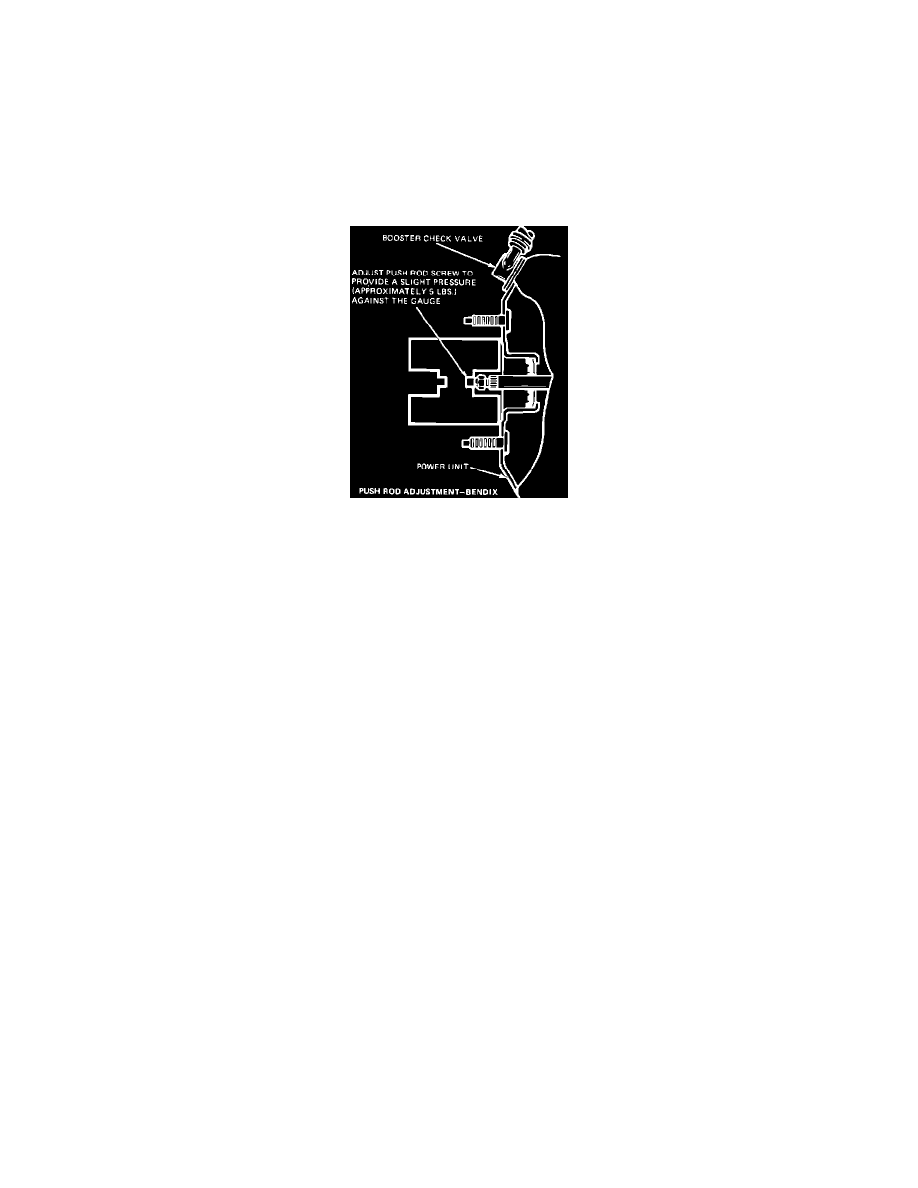Daytona L4-135 2.2L SOHC (1984)

Vacuum Brake Booster: Adjustments
Proper adjustment of the master cylinder pushrod is necessary to ensure proper operation of the power brake system. A pushrod that is too long will
cause the master cylinder piston to close off the compensating port, preventing hydraulic pressure from being released and resulting in brake drag. A
push rod that is too short will cause excessive brake pedal travel and cause groaning noises to come from the booster when the brakes are applied. A
properly adjusted pushrod that remains assembled to the booster with which is was matched during production should not require service adjustment.
However, if the booster, master cylinder or pushrod are serviced, the pushrod may require adjustment.
There are two methods that can be used to check for proper push rod length and installation: the gauge method and air method. Usually, if the power unit
push rod requires an adjustment the Power Unit Repair Kit for the unit being serviced includes a gauge. The gauge measures from the end of the push
rod to the power unit shell.
Fig. 1 Master cylinder push rod adjustment. Bendix type vacuum booster
GAUGE METHOD
BENDIX TYPE
1.
Disconnect master cylinder from booster leaving brake lines connected, and secure cylinder to prevent lines from being damaged.
2.
Start engine and allow to run at normal curb idle speed.
3.
With engine running, position gauge over pushrod. Gauge should and bottom against booster housing with a force of approximately 5 lbs. applied
to push rod.
4.
If force required to seat gauge exceeds 5 lb., shorten length of pushrod. If force required to seat gauge is less than 5 lbs, lengthen push rod. Ensure
that pushrod is properly seated in booster when performing gauge check.
5.
Reinstall master cylinder and remove reservoir cover.
6.
Observe fluid surface when brakes are applied and released rapidly. If no movement is observed on fluid surface, pushrod is adjusted too long.
AIR METHOD
1.
Be sure master cylinder attaching nuts are tight.
2.
Remove master cylinder filler cap.
3.
With brake released, force compressed air into the hydraulic outlet of the master cylinder. Regulate air pressure to a value of approximately 5
psi, to prevent spraying brake fluid from master cylinder. Care must be taken not to allow brake fluid to contact painted surfaces of
vehicle, skin or eyes, as damage or personal injury will result.
4.
If air passes through the compensating port, which is the smaller of the two holes in the bottom of the master cylinder reservoir, the adjustment is
satisfactory.
5.
If air does not flow through the compensating port, adjust the pushrod as required, either by means of the adjustment screw (if provided) or by
adding shims between the master cylinder and power unit shell until the air flows freely.
6.
Reconnect brake lines and bleed system.
